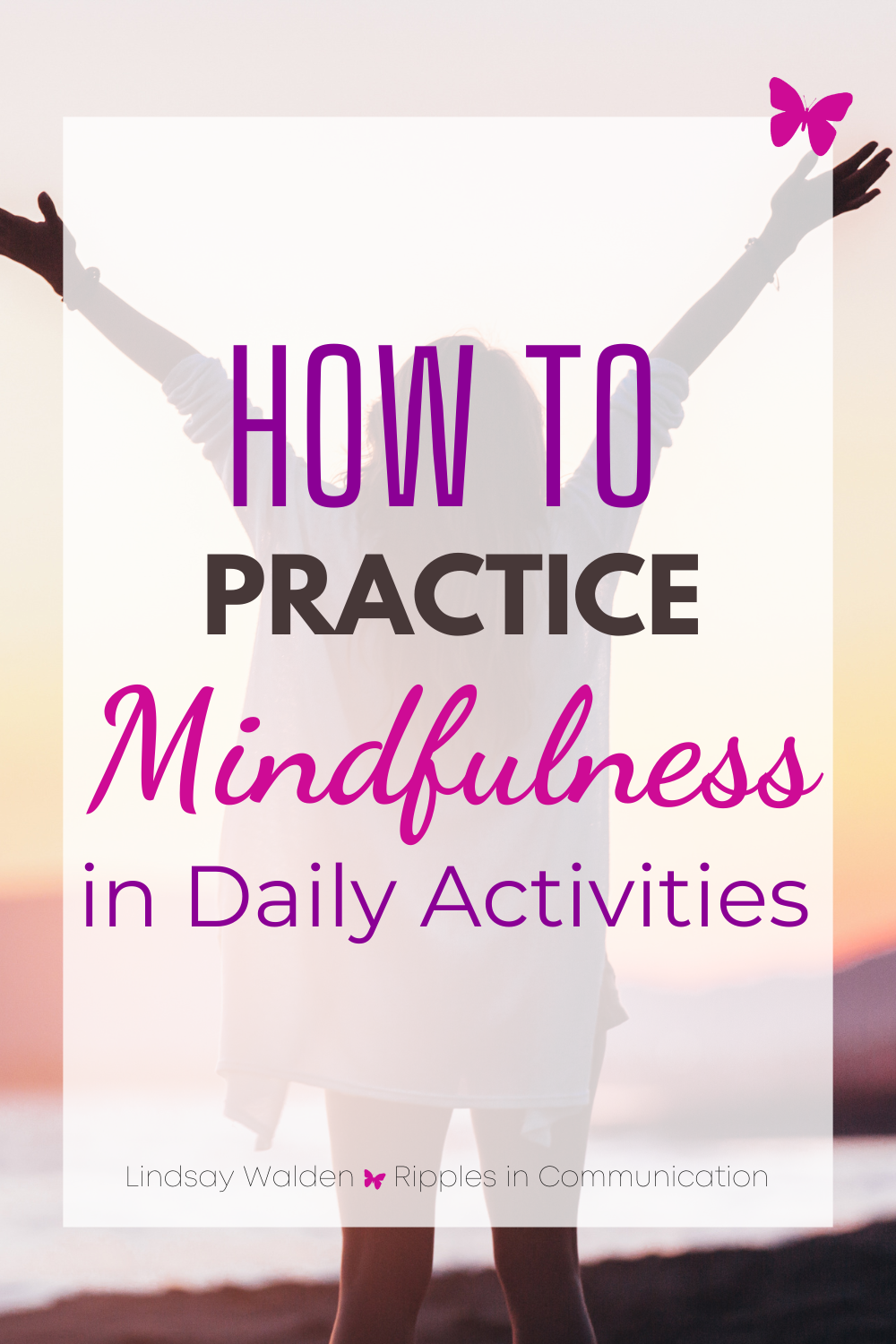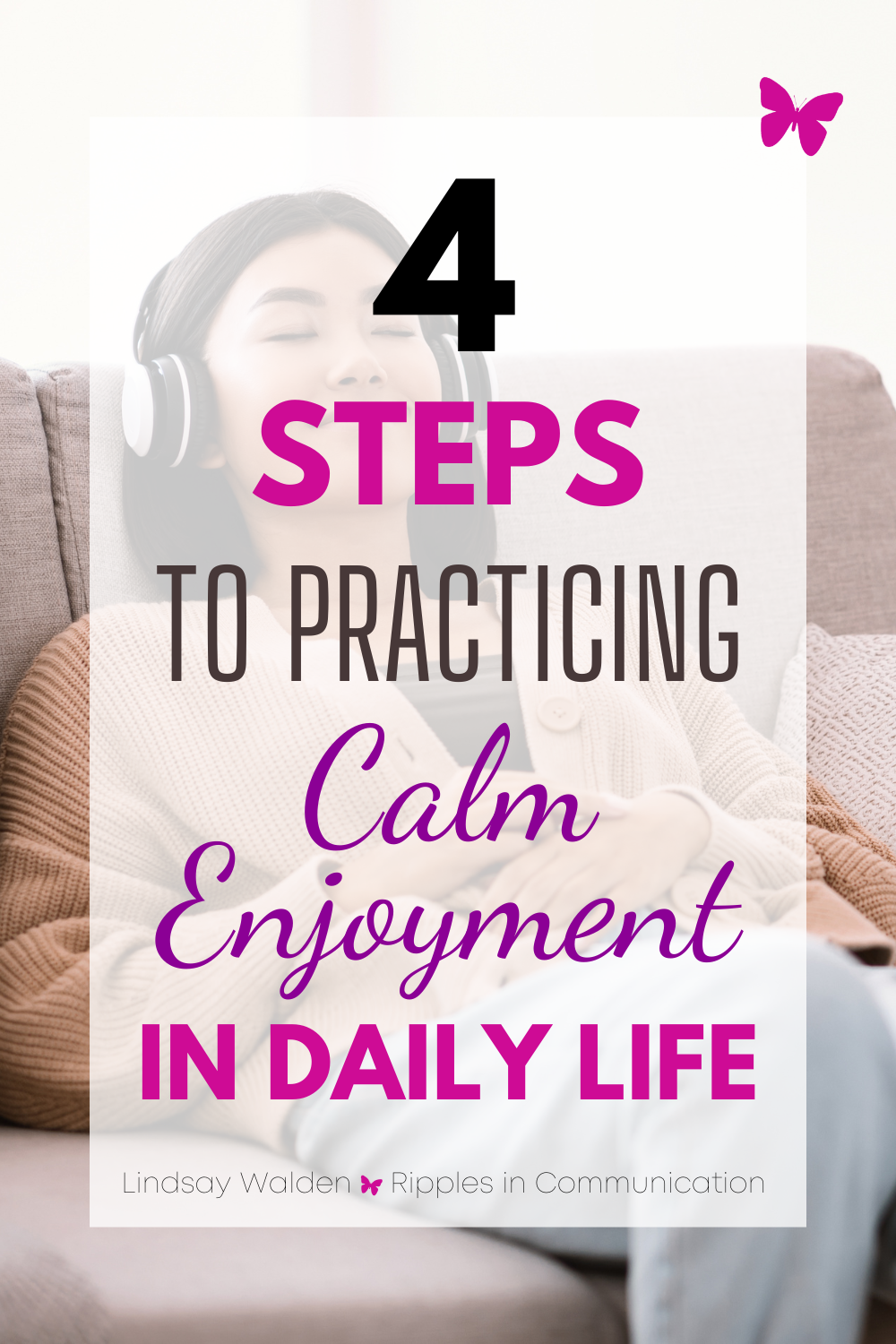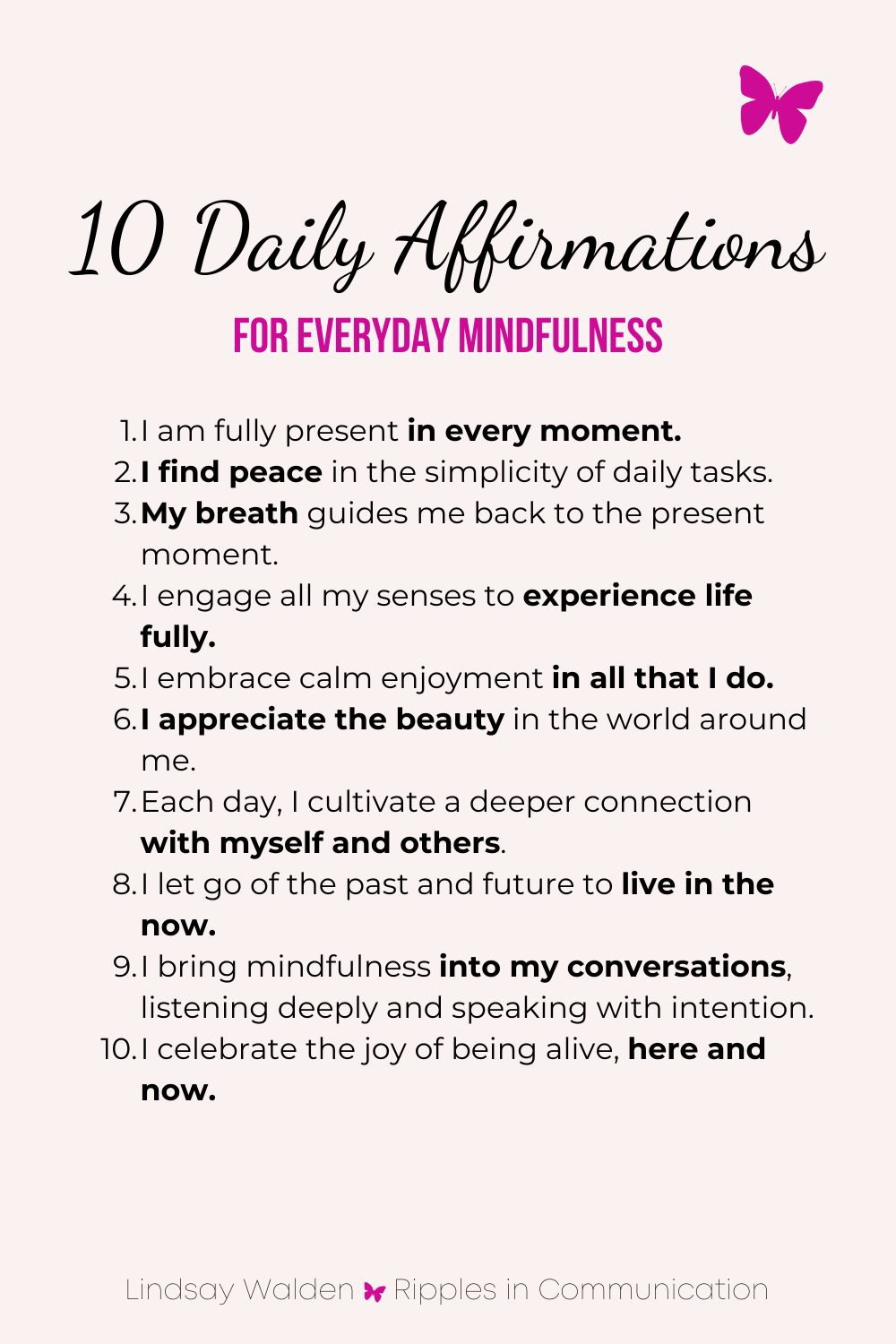How To Embrace Everyday Mindfulness
Beyond Silence: Practice Mindfulness That's Not Traditional Meditation
It's common for people to think mindfulness means silent meditation when really mindfulness is an umbrella term and a state of being that transcends the silence of meditation. It has unfolded as a vital pathway towards enhancing communication among couples, nurturing self-awareness, and fortifying mental health. Often misconceived as synonymous with meditation, mindfulness blooms in the soil of daily activities, conversations, and the simple yet profound act of being present. As a licensed couples and sex therapist, my journey with clients shows that at the heart of enriching intimacy and navigating communication issues lies the power of open, candid dialogues. This approach fosters a foundation where mindfulness thrives, not just as a practice but as a lived experience, infusing authentic conversations and practical mindfulness into the fabric of healthy relationships. I have found it's fairly common for my clients to struggle with traditional forms of meditation, especially if they are neurodivergent. I always assess my clients and ask questions about their comfortability with meditation as a way to help relieve stress and process what they are going through. When it's discovered that they aren't comfortable or struggle with meditation, I help them learn daily mindfulness exercises that give them the same benefits as traditional meditation and that also can become pivotal moments of their self-care and sense of feeling grounded amidst the chaos of day-to-day life.
Key Takeaways:
Mindfulness Enhances Relationships: By encouraging open, honest communication, mindfulness serves as a bridge to deeper intimacy and understanding in relationships.
Practical Exercises for Daily Life: Simple, tangible activities such as mindful observation and engaging the five senses offer alternatives to traditional meditation, making mindfulness accessible to everyone.
Calm Enjoyment for Presence: The practice of 'calm enjoyment', a concept introduced by Chase Hughes, highlights the significance of finding joy and presence in the mundane, fostering a mindful approach to self-care and daily tasks.
Have you gotten my FREE Relationship Communication Guide yet? Start building an authentic, conscious, and thriving relationship with your partner TODAY. Say goodbye to misunderstandings, conflicts, and missed opportunities for a deeper connection. These are the same tips and practical advice I give to my clients every day. With this guide, you'll be equipped to navigate any communication challenge and build a strong and fulfilling bond with your partner. Click the button below to enter your email address and I will send the guide to your inbox right away!
Meditation Myths Debunked
Many hold a misconception that mindfulness and meditation are interchangeable terms, linked exclusively with seated, silent practices. This belief could not be further from the truth. In reality, mindfulness encompasses a vast range of techniques, aiming to bring individuals into the present moment. These include practical mindfulness exercises that blend seamlessly into daily routines, offering alternatives to traditional meditation. Acknowledging this opens doors to enhanced connectivity with ourselves and those around us, fostering intimate and healthy relationships through authentic conversations. Embracing such mindfulness activities, one can cultivate a grounding strategy, living more fully in each moment, regardless of the presence of silence.
The Power of Mindful Observation
Many of my clients held the notion that mindfulness was synonymous with sitting in silence, eyes closed, legs crossed. However, I introduced them to an alternative that surprised them with its simplicity and effectiveness. This exercise revolutionized their approach to mindfulness. It centered around the act of observing the myriad shades of green visible from a window. This method proves particularly engaging for those finding traditional meditation challenging.
By setting a timer for just 30 seconds, individuals can immerse themselves in this task. The goal is not to overthink but to focus on identifying as many green hues as possible. If the mind wanders, gently guide it back to the task. This practice hones concentration, anchors the mind in the present moment, and cultivates a state of calm awareness. The beauty of this activity lies in its straightforwardness, offering a fresh perspective on mindfulness accessible to anyone, anywhere.
Step-by-Step Guide to Mindful Observation
First, you will need a timer. Your phone will suffice for this purpose. Set it for precisely 30 seconds. Once ready, position yourself by a window with a view of the outdoors. The next part demands your attention entirely directed towards what you will observe outside. Your sole task during this half-minute is to identify as many different shades of green as possible. Green in the leaves, on the grass, or any other natural elements comes into focus here. If your mind starts to wander, gently steer it back to the hues of green you are seeking. This practice isn't just about what you see; it's a training in mindfulness, attention, and the beauty of simplicity. When the timer concludes its countdown, allow yourself a moment to absorb the experience before returning to your day. This exercise, though brief, acts as a potent tool for grounding and centering, allowing you to reconnect with the present moment.
Engaging the Five Senses
Mindfulness doesn't demand silence or stillness. In fact, I've found it thrives in the richness of our daily experiences. Through my work in couples and sex therapy, the concept of engaging all five senses stands out as a simple, yet profoundly effective form of mindfulness. This strategy isn't just beneficial; it's essential for those who struggle with traditional meditation methods.
Imagine harnessing the power of your senses to anchor you firmly in the present. This act transforms mundane moments into opportunities for deep connection and awareness. For clients navigating communication issues or seeking to deepen intimacy, this practice offers a direct route. It's the practical mindfulness our busy lives demand. Open conversations, real connection, and a grounding in the now – these are just a taste of what engaging all five senses can bring to your life and relationships.
5 Senses Mindfulness Activity
Embarking on a journey to enhance presence and gratitude doesn't always necessitate conventional methods like meditation. A simple yet effective exercise involves engaging all our senses, grounding us in the moment. This practice can transform mundane experiences into opportunities for mindfulness, fostering deeper connections with ourselves and enhancing our open conversations in relationships. Here's how you can integrate this into your daily routine:
See: Look around and notice one item that catches your eye. Observe its colors, shapes, and how it interacts with the surrounding space.
Hear: Close your eyes and tune into a sound you can hear. It might be the distant hum of traffic, the chirping of birds, or the soft rustle of leaves.
Smell: Draw your attention to any scent that is present. Whether it's the faint aroma of coffee, a floral fragrance, or even the neutral air around you, acknowledge it.
Taste: If possible, take a small bite of something or sip a drink. Focus on the flavors, texture, and the sensations they evoke.
Touch: Reach out and feel the texture of an object near you. Notice its temperature, the materials it's made from, and how your skin reacts to its surface.
Through these steps, mindfulness transforms from an elusive concept into a tangible daily practice, making every moment an invitation for calm enjoyment and authentic connection.
Uncover easy ways to weave mindfulness into your daily activities for a more present and fulfilling life. Discover the joy in the now.
The Concept of Calm Enjoyment
I learned an invaluable lesson from Chase Hughes, an expert whose teachings impacted me deeply. He introduced a life-changing concept to me: calm enjoyment. This idea has revolutionized the way I approach every moment, no matter how mundane it may seem. Calm enjoyment isn't just about relishing the grandiose episodes of our lives; it's about finding presence and gratitude in the most ordinary of tasks. Whether I'm sipping morning coffee or walking to the mailbox, calm enjoyment reminds me to stay present, to value every second for the unique experience it offers. This practice has served as a cornerstone in my journey towards mindfulness, granting me moments of peace in a chaotic world. For those of us striving for mindfulness, especially when neurodivergent minds challenge our focus, calm enjoyment becomes a nurturing path to grounding ourselves in the now.
Practicing Calm Enjoyment in Daily Life
I came across a transformative concept known as calm enjoyment while studying under the insightful Chase Hughes. This approach has revolutionized the way I engage in daily activities, making the mundane marvelous. By focusing on the present moment and finding gratitude in whatever task I'm performing, I've discovered a powerful method to enhance my mindfulness practice. Here are the steps to weave this practice into your own life:
Identify a routine task that you do every day, such as washing dishes or walking to work.
Engage fully with the task, paying attention to each movement, sensation, and aspect of the experience.
Embrace gratitude during the activity. Remind yourself of the opportunity it provides for practice, presence, and peace.
Reflect afterwards on how the experience felt and what it brought to your day.
By integrating calm enjoyment into your life, you invite a sense of presence and thankfulness into otherwise overlooked moments, reinforcing your daily mindfulness practice and enhancing your overall well-being.
Mindfulness for the Neurodivergent Mind
For individuals with neurodivergent minds, embracing mindfulness practices such as calm enjoyment is crucial. These practices play a significant role in helping us stay present amidst the whirlwind of our thoughts and emotions. Neurodivergent individuals often find it challenging to remain focused on the here and now, as our minds are constantly navigating through a maze of stimuli. By engaging in mindfulness activities like observing the myriad shades of green through a window or tuning into our five senses, we can anchor ourselves in the moment. Furthermore, the concept of calm enjoyment, as taught by Chase Hughes, encourages us to find joy and gratitude in the simplicity of everyday tasks, transforming mundane moments into opportunities for mindfulness. This practice has proven to be a vital tool in my self-care routine, offering a pathway to grounding and presence that is both practical and profound.
Building a Routine Around Mindfulness
Integrating mindfulness into your routine can initially seem daunting, yet it need not be. It starts with acknowledging that everyday activities offer opportunities for mindfulness moments. For instance, I recommend beginning your day with a short session of mindful observation. This practice involves focusing intently on your surroundings, perhaps noting the hues of the dawn or the sounds of the morning. Aligning this activity with daily rituals, such as drinking your morning coffee, ensures it becomes a staple in your day-to-day life.
Next, consider engaging your senses throughout the day. This approach involves paying close attention to what you see, hear, smell, taste, and touch. Doing so not only enriches your experiences but also anchors you in the present moment. A simple way to integrate this is by setting reminders on your phone or computer, prompting you to pause and observe your environment using all five senses. Lastly, embrace the concept of calm enjoyment, particularly during tasks perceived as mundane. This mindset shift transforms everyday tasks into moments of mindfulness, allowing for a deeper appreciation of the present.
Mindfulness as a Relationship Tool
In our journey toward healthier relationships, mindfulness emerges as a transformative tool. It fosters communication issues resolution and deepens intimacy between couples. With mindfulness, individuals and partners learn to engage in open conversations, grounding their relationship in honesty and authenticity. This practice supports us in navigating the complexities of both couples therapy and sex therapy, where the primary aim is cultivating a space for genuine, heartfelt exchanges.
Mindfulness activities, particularly those not centered around traditional meditation, can be incorporated into daily mindfulness practice. These include practical mindfulness exercises like the observation of nature or engaging the five senses. Such activities encourage us to stay present, making it easier to listen, understand, and connect with our partner on a profound level. By practicing mindfulness, we invite a sense of calm enjoyment into our lives, crafting a foundation for open and authentic conversations. Ultimately, mindfulness stands as a pillar for building healthy relationships, rooted in presence practice and an unwavering commitment to understanding and caring for one another.
Overcoming Challenges in Mindfulness Practice
Many find embarking on a journey toward daily mindfulness daunting. They worry about the need for uninterrupted silence or fear their minds are too cluttered to achieve a state of tranquility. I've seen clients battle these misconceptions, believing that a neurodivergent mind or a bustling lifestyle disqualifies them from the benefits of mindfulness activities.
Yet, the truth lies in adopting practical mindfulness strategies that resonate with your life. Whether through grounding strategies like mindful observation, engaging the five senses, or Chase Hughes's concept of calm enjoyment, mindfulness morphs to fit your world. Mindfulness breaks, even as brief as a few seconds, can significantly enhance presence practice in everyday tasks. This approach makes the practice of mindfulness accessible, regardless of how chaotic a day might seem or how neurodivergent one might be. It's about finding those moments of presence, using open conversations with oneself, to embrace a routine around mindfulness that fosters healthy relationships and a strong sense of self-care.
Embrace the art of calm enjoyment with these 4 simple steps, transforming everyday moments into opportunities for peace and joy.
Frequently Asked Questions
Many have posed questions about embracing mindfulness and finding meditation alternatives. Here are concise responses to some frequently asked questions.
Can mindfulness improve my relationship? Absolutely. Practices like engaging in authentic conversations and grounding strategies foster a strong connection, enhancing communication and intimacy.
What if I'm not good at staying still for meditation? No worries. Activities that involve observing your surroundings or engaging the five senses can be powerful meditation alternatives, inviting presence without stillness.
How do I incorporate mindfulness into my daily routine? Start small. Mindfulness breaks or the practice of calm enjoyment can seamlessly become part of your day, offering grounding moments amidst chaos.
Are these practices suitable for people with a neurodivergent mind? Indeed. Techniques like calm enjoyment provide a mindfulness framework that caters to various mind types, promoting self-care and presence practice for all.
What if I find it hard to practice mindfulness alone? Consider seeking support. As a couples and sex therapist, I emphasize open conversations and practical mindfulness exercises that can be explored individually or with a partner.
Embracing the Journey
I have wandered through the vast landscape of therapeutic practices, always returning to the solid ground of mindfulness. As a dedicated practitioner, it has been my mission to guide you—whether as individuals grappling with communication issues or couples seeking deeper intimacy—toward the liberating realms of open conversations. The journey to authentic communication and healthy relationships is not a sprint; it demands patience, perseverance, and, above all, presence.
Engaging in daily mindfulness practice, like the seemingly simple acts of observing varied shades of green or invoking all five senses, empowers us. These practical mindfulness activities teach us grounding strategies that anchor us in the now, making every moment an opportunity for calm enjoyment. From my personal explorations and professional experience, I've learned that mindfulness breaks tailored to your unique neurodivergent wiring or tailored to satiate your longing for connection can dramatically shift your perspective from fleeting to present.
As we conclude our exploration of meditation alternatives, remember that each suggestion, each step, has been a stepping stone and one that is meant to be taken without judgment and by showing grace for yourself and others as we are all on our own journey. By incorporating the five senses into our daily practice or reminding ourselves of the value in every instance of calm enjoyment, we're not just practicing mindfulness—we're living it.
Let's take this beyond sex therapy or couples therapy, beyond merely addressing communication issues or striving for intimacy. Let this be about transforming your relationship with yourself and with the world. Whether it's through practical mindfulness strategies or embracing the presence practice fully, you have the power to weave presence and gratitude into the fabric of your everyday life. You're not alone on this journey. Together, let us continue to embrace each moment, not just with mindfulness but with a heart full of gratitude. Remember, the power within you is immense, and with each mindful step, you're creating a life filled with authentic conversations, lasting connections, and infinite possibilities.
Elevate your daily routine with these 10 affirmations for everyday mindfulness, designed to bring you into the present and enrich your life with joy and connection.







